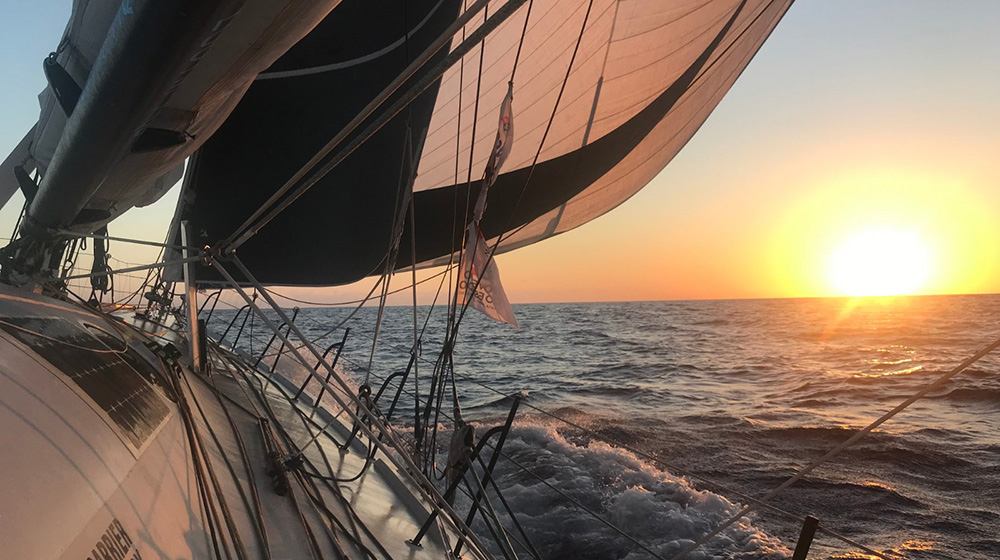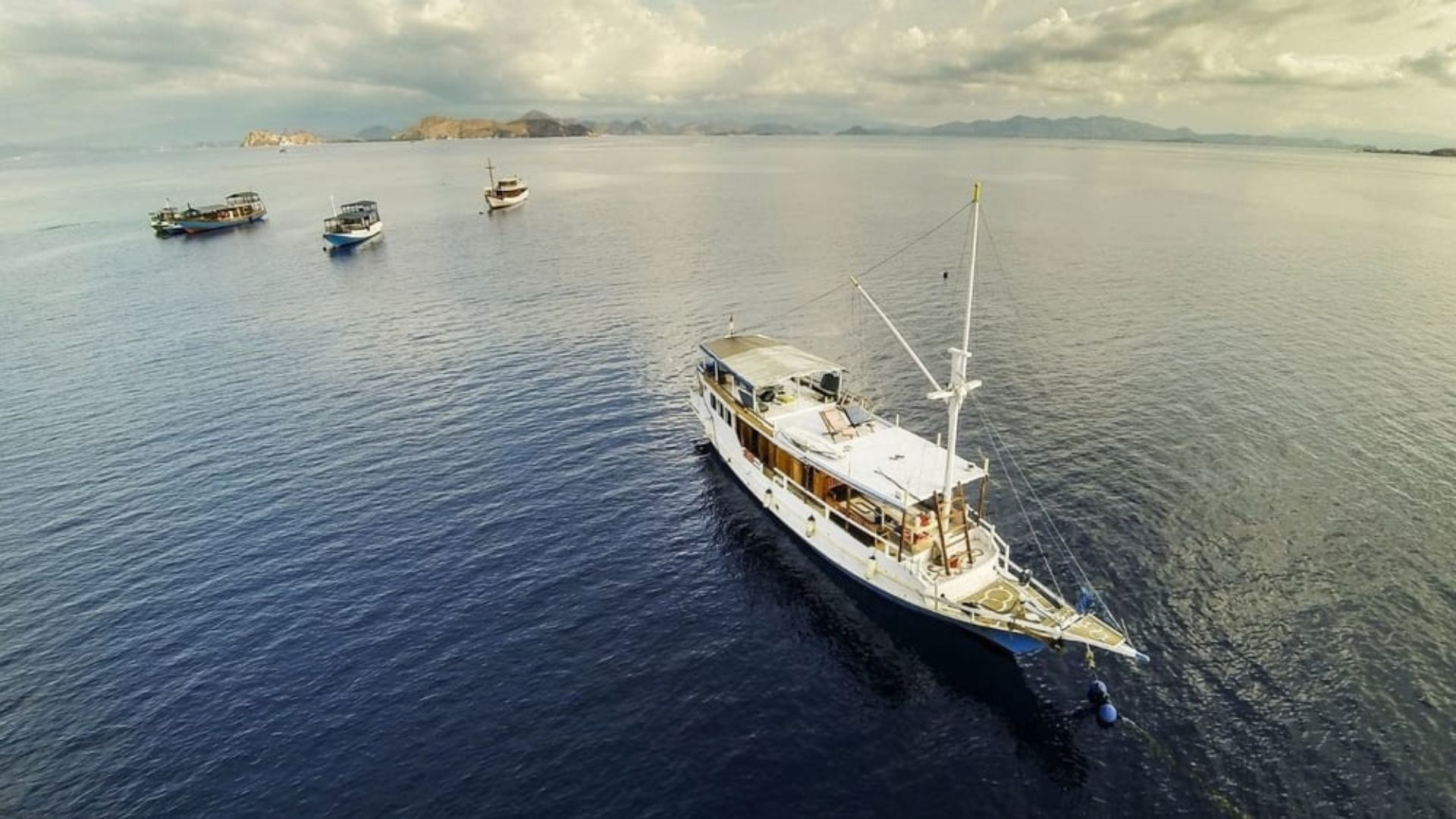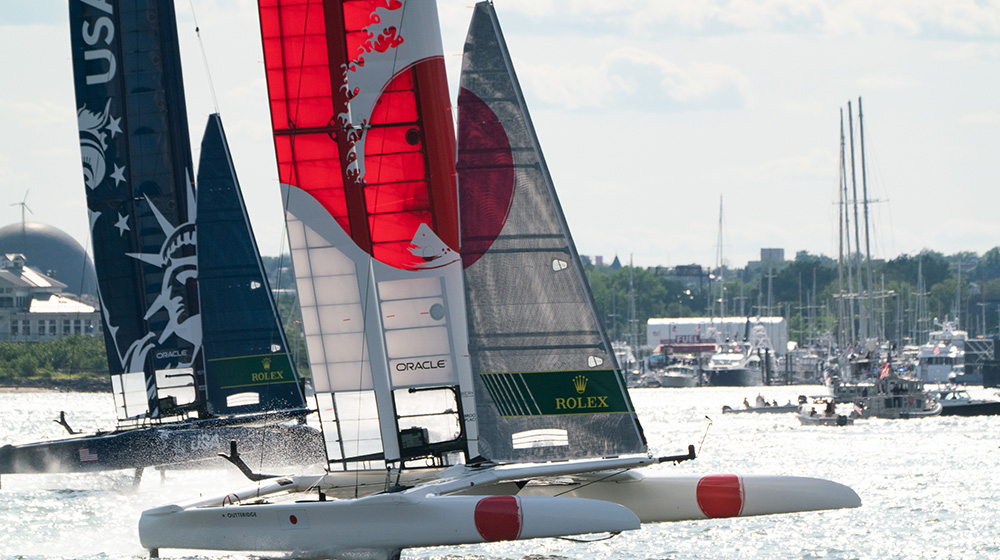
Ground Swell in navigation, how does it affect?
The swell, a natural phenomenon that can be both impressive and challenging, presents a unique scenario for sailors.
What is ground swell?
The phenomenon known as groundswell is a wave movement that arises due to the distant action of winds on a body of water, generating a prolonged and generally uniform ripple on the sea surface once the originating wind ceases.
These waves, which may be almost imperceptible at sea, gain energy and strength as they advance towards the coast, becoming a formidable force for any vessel that crosses their path.
For sailors, facing a swell means dealing with towering waves that can reach heights of more than 20 feet. The impact of these waves can cause a pronounced rocking of the vessel, making navigation challenging and even dangerous.
This motion may not be evident to the naked eye, but is manifested through the rocking and pitching of the boat.
In addition to the physical challenge, the swell can also have a psychological effect on the crew. The constant sensation of motion and the unpredictability of the waves can generate stress and fatigue, affecting the crew's ability to make informed decisions and respond effectively to emergency situations.
Characteristics
Deep-sea waves are characterized by having a base much wider than their height, with more rounded crests. The shape of the wave crests allows them to be visually followed over long distances, reaching approximately six to seven times the separation between them.
Because of their length, bottom sea waves have a longer duration, persisting for longer periods of time compared to short waves, which tend to return more quickly to a regular and harmonious motion. Thus, these waves can travel hundreds or thousands of miles.
This movement is distinguished by being broader and slower, with periods of 15 to 30 seconds, contrasting with the chaos generated by the wind sea, and traveling in a direction independent of the wind present at that time and place, apparently with its own dynamics. A surface wave becomes a swell wave when it leaves the zone of influence of the wind that generated it.
The sudden appearance of a swell in calm and calm conditions, without the previous presence of strong winds or storms nearby, may be an indication of the arrival of a wind front. Therefore, it is important to observe the signals of the sea as it can provide early warnings of phenomena that may be uncomfortable or dangerous.
Tips
When faced with the challenge of rough seas, it is crucial to take appropriate measures to ensure the safety of your vessel and crew.
- Layer navigation: In the face of the imposing waves of rough seas, layering navigation can help mitigate the impact of the waves on the hull of the vessel.
- Weather forecast: Recognizing and following the weather forecast is essential to avoid putting our vessel at risk. Nowadays, there are wave forecasting systems that allow us to anticipate the sea conditions in our nautical adventure.
- Attack the waves at the tacks: If the swell is strong, it is advisable to attack the waves at the tacks to minimize the risk of heeling and capsizing. Never break directly into the waves.
- Match the boat's speed: Keeping the boat's speed in line with the speed of the waves helps us to avoid the abrupt blows known as "pantocazos".
- Look for land as a reference: In adverse conditions, such as small boats and rough seas, looking for land as a reference and keeping your hands on the helm and engine control panel is essential for a quick and efficient response.
- Move on deck with caution: In case of strong oscillation, it is advisable to move on deck leaning towards the inside of the boat and holding on to a point of resistance.
- If waves open waterways in the boat, draining the water with a hydraulic pump and blocking the exit with asbestos patches or a tarpaulin is crucial. If water leaks persist, call for help immediately.
- Closing hatches and checking taps: Closing hatches, hatches and portlights on time, as well as ensuring that taps are properly closed and free of obstructions, is essential to maintain the integrity of the vessel.
- Provision of safety equipment: Liferafts, safety harnesses and dinghies must be available at all times and crew members must wear life jackets.
When sailing, it is advisable to reduce the jib and mainsail to maintain balance. Moving away from the leeward coast and communicating the situation to the coast guard is crucial for safe navigation.
In conclusion, rough seas present a unique challenge to sailors, who must be prepared to face extremely difficult sailing conditions.
Careful planning, monitoring the weather and taking appropriate safety measures are essential to ensure crew and vessel safety in rough waters. Despite the challenges it presents, rough seas also offer an opportunity for sailors to demonstrate their skill and seamanship by successfully navigating through the waves and reaching safe harbor.













_v2.svg)
_v2.svg)









_v2.svg)


